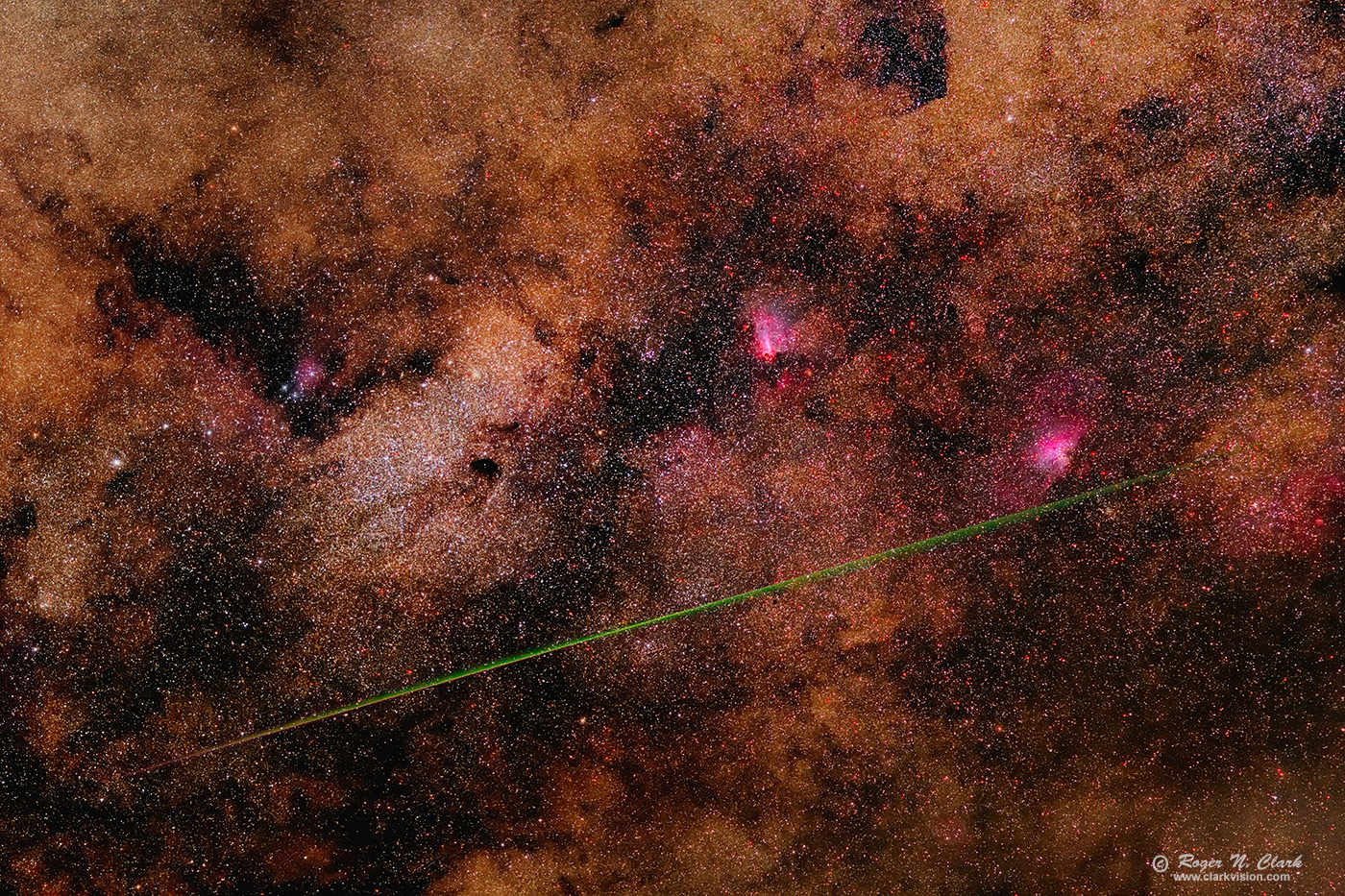| Home | Galleries | Articles | Reviews | Best Gear | New | About | Contact | Gallery Index | Previous |
Next |

| Home | Galleries | Articles | Reviews | Best Gear | New | About | Contact | Gallery Index | Previous |
Next |

The Summer Milky Way is a treat of celestial delights. This view is just above the galactic core (as viewed from the Northern Hemisphere). At center right is a large star cluster, called the Small Sagittarius Star Cloud, Messier 24 (M24). M24 contains stars that are similar to solar type stars, thus appear white. Above and just right of center is the pink Omega or Swan nebula, M17, and to the right is the pink Eagle nebula, M16. All three show beautiful detail i amateur telescopes. Going though the image below these deep sky objects is a Perseid meteor (green streak). The image was obtained around 11 pm local time August 11, 2018, one day before the Perseid meteor shower peak. North is to the left in this image (so the long dimension fits on computer screens better). The background shows red-orange interstellar dust grading into dense patches of interstellar dust so thick, no light gets through (near black in the image). See Meteor Photography. for informaton on how to photograph meteors.
Technical. This image was obtained with a stock Canon 6D camera and Canon EF 70-200mm f/2.8L IS II USM lens. Forty 1-minute exposure were combined, and one of those exposures contained the meteor. Total exposure time was 43 minutes and f/2.8, ISO 1600. This is a natural color image. Post processing: Raw conversion with Rawtherapee with settings tuned for astrophotos, including maintaining star color in saturated stars. Rawtherapee processing settings described here. Output color space was Rec.2020 to match the future of high dynamic range TVs and the web presentation here is sRGB.
The Exposure Factors, CEF, CEFA are measures of the relative amounts of light received from a subject. It can be used to fairly compare wildly different lens/telescope apertures and exposure times. For this image on the thirty 15-second images on the tail:
Modern DSLRs like the Canon 6D include on sensor dark current suppression and low fixed pattern noise at ISOs around 1600 and higher, making no need for dark frame subtraction. Modern raw converters correct for light fall-off and also correct for hot/dead/stuck pixels. This makes processing low light images easy: simply align and average.
To learn how to obtain stunning images like this, please visit my Extensive Articles on Photography .
Keywords to this image = astrophoto-1 nebula Messier meteor star_cluster low-light digital_astro rnc-color-stretch canon_6d NEW
Image ID: m24-m16-200mm-rnclark-av40-c08-11-2018-img0539-80.rcstr1.-f-r90-1400s.jpg
| Home | Galleries | Articles | Reviews | Best Gear | Science | New | About | Contact |
Last updated July 01, 2023